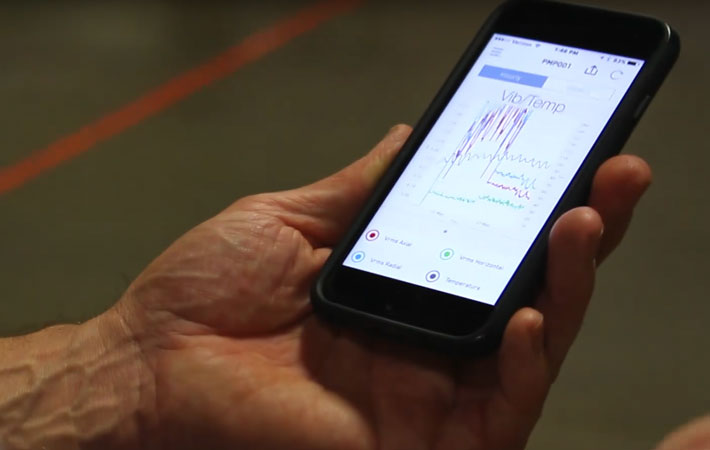
The "Internet of Things" (IoT) continues to explode in the manufacturing world. Machines are becoming Bluetooth enabled and interconnected, giving manufacturers more visibility to things like performance data.
Even as a distributor of fluid process technology, we're seeing more manufacturers come out with apps and technology to plug into other technologies. ITT Goulds Pumps' i-Alert2, and PumpSmart PS220 are just a few examples.
With so many manufacturers taking the plunge into big data, we thought our readers would appreciate a fresh perspective on the topic. We reached out to Omni Resources of Appleton to get their tips on how to avoid disaster when implementing a new Big Data project.
If you are thinking about starting your first Big Data project, you probably already know the term Big Data refers to large volumes of data that your business collects. This data can be everything from engineering schematics in image form to your company’s financials already stored with your IT department.
Big Data holds great promise for manufacturers. Everything from better plant performance, to more efficient inventory control, to servicing customers more effectively can be achieved through this technology. Between the proven results, conference talks, blog articles and industry research reports it's hard to avoid the excitement in the marketplace.
But where to start?
Sometimes the best way to find a direction is knowing where not to go.
Big Data projects can go off the rails for a number of reasons. Here are three common ones:
It's a common scenario.
The CIO returns from a conference all pumped up from a Big Data presentation. Anxious to replicate the results from the presentation in her own company, she orders a generic pre-packaged solution from a big-name vendor and installs it within the company. She maps data sources, fires up the analytics engine, and hopes one of the canned reports will immediately flag a situation that will save the company more dollars than she spent on the big data software.
Known as "deploy and pray" in the industry, the problem with this approach is that it starts with the how rather than the why. Unexpected insights are one of the benefits of Big Data. Just don’t make your first goal the unexpected insight.
Where to start instead? Find an existing challenge in your company. Create a clear objective for solving it. Then seek the data sources that will enable decision making.
No surprise here. So often projects don't fail because the tech is wrong, but rather because the people are wrong. A Big Data project isn't an IT project. It's an Operations project.
Don't have IT lead the work.
Have an operations person lead it instead. They should be focused on solving a business challenge. And they should be responsible for the results. Have IT on the team, but not leading the charge. Make sure you have someone with the analysis knowledge the project needs.
"Three out of four companies haven't employed a data analyst, and out of companies that do, only one quarter are using these employees competently." http://www.cio.com/article/3003538/big-data/study-reveals-that-most-companies-are-failing-at-big-data.html
But be realistic in your requirements. You may be able to train an existing internal staffer cheaper and faster than hiring a full-time data analyst.
When I was a child, I'd often fill my plate with big servings of the food I loved (for me it was Mom’s meatball sub casserole). She would often say, "Your eyes are too big for your stomach."
The same thing can happen with Big Data projects. Lacking any proven ROI companies often launch enterprise-level projects. By having "eyes too big for their stomachs" these projects often waste internal time and budget by being delayed, getting refactored or simply cancelled.
"I predict that half of all big data projects will fail to deliver against their expectations."
http://www.forbes.com/sites/bernardmarr/2015/03/17/where-big-data-projects-fail/#6a9f68bf264e
Start small. And simple. And cheap. Find an easy win to build confidence. Build on success.
You can always go back for seconds. I did!
If this article has whet your appetite for more about Big Data projects, consider downloading the eBook “10 Ways Big Data is Revolutionizing Manufacturing.” It has a number of examples of how Big Data might benefit your company along with a short Getting Started section that will help you plot out your first project.
Need Help?
And if you need help in the kitchen, feel free to contact Omni Resources. They're happy to sit at the table with you.
Author credit:
Tony Olson, Business Development Manager
Omni Resources, Inc.
https://www.linkedin.com/in/olsontony/
Tony Olson is a Business Development Manager with Omni. He focuses on solving client challenges with Omni's custom solutions and technology strengths. His diverse background in custom software, project management, and infrastructure gives him an encompassing view into what is possible. Due to his broad experience, he takes a consultative approach to achieving a client’s goals.
These Stories on Technology
Headquarters and Service Center
Located outside Green Bay, WI
707 Ford Street
Kimberly, WI 54136
920-733-4425
OptiFlow Design and Build Center
1002 Truman Street
Kimberly, WI 54136
920-733-4425
Burnsville Service Center
12265 Nicollet Avenue
Burnsville, MN 55337
952-444-1949
Grand Rapids Service Center
26489 Industrial Blvd
Cohasset, MN 55721
952-444-1949
© Copyright 2024. Crane Engineering. All Rights Reserved. Privacy Policy.